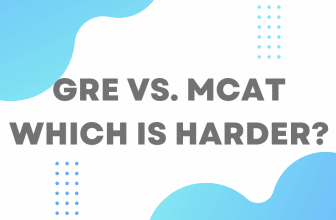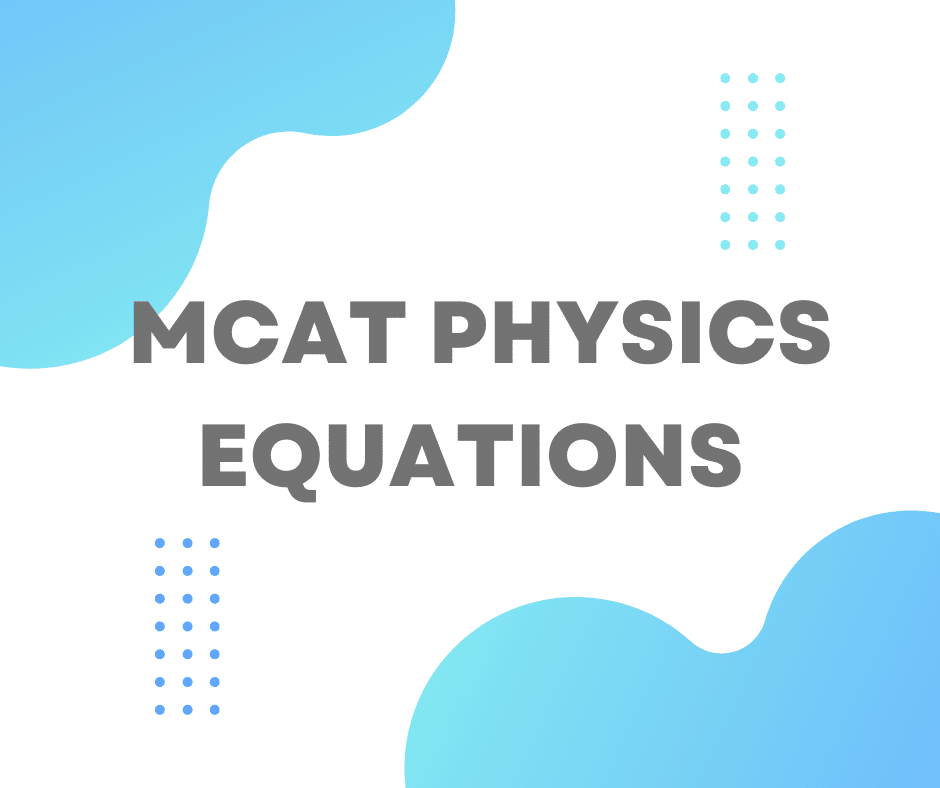

MCAT Physics Equations – What are they, how they work?
This guide provides an overview of essential physics equations for MCAT prep. The primary purpose of including the physics portion in the test is to assess your understanding of physical principles in the context of living systems and their responses. You are not allowed to use a calculator on the MCAT. Instead, the test focuses on analyzing your critical reasoning skills for interpreting and solving problems.
Being a premed, you must have spent considerable time and energy memorizing and practicing complex equations and long physics formulas to get through the semester. Nevertheless, MCAT physics does not include extra complicated equations.
Instead, you need to be familiar with introductory-level physics.
You must be able to apply your knowledge of physics to comprehend the dynamics of living systems.
How much Physics is on the MCAT?
Out of the four MCAT sections, you will apply your knowledge of physics equations in the first section, i.e., “Chemical and Physical Foundations of Biological Systems.” The physics portion makes up 25% of this section per American Association of Medical Colleges (AAMC) guidelines. The questions in this section can either be discrete or passage based.As mentioned above, this 25% will not be based on overly complicated questions. Instead, you must be able to apply your concepts from introductory-level physics to solve them.1
Types of MCAT Physics Equations
There are three types of equations in MCAT physics.
1. Gold-standard physics equations that you must memorize.
2. Equations that you must memorize in pairs. For example, Ohm’s law equation V = IR and electric power formula P = IV are often used together, so it will be beneficial if you memorize them in paired form.
3. Equations that you do not need to memorize but must know how to apply them. For instance, Doppler’s effect equation.
This guide provides you with these three types of physics equations and precise background details of these equations.
MCAT Equations
Here is a list of essential physics equations that you need to know to clear the MCAT and get into medical school. We are presenting these equations and formulas under the following content categories:
- Basic Physics
- Fluids
- Electricity and Magnetism
- Waves, Sound, and Light
- Atomic Theory 2
Basic Physics for the MCAT
1. Newton’s Second Law
Newton’s second law of motion, also known as the law of force and acceleration, states that net force applied to an object is directly proportional to its mass ‘m’ and acceleration ‘a’ produced due to that force.

2. Work done by a constant force
Work done by a constant force is equal to the product of the magnitude of the force and the distance covered by the object in the direction of the force.

3. Work-Energy Principle
According to the work-energy principle, the total work done on an object or system equals the change in kinetic energy (K.E.) of that system.4 It is presented as:

4. Kinetic Energy
Kinetic energy is the energy possessed by the object due to motion. To move an object, we need to apply a force ‘F’ and do some work ‘W’ on that object. As a result of work done, some energy is transferred to that object, as a result of which it starts moving. This energy is called the “kinetic energy” of that object, and it is given by:
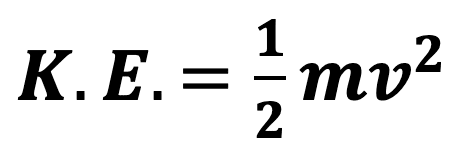
Where ‘m’ is the object’s mass, and ‘v’ is the speed with which it moves.3
5. Gravitational Potential Energy
Potential energy is the form of energy possessed by an object because of its position. When an object falls towards the surface of the Earth from the height (h), it experiences gravitational acceleration ‘g’ due to the Earth’s force of gravity. The value of g is 9.8ms-2. The potential energy, in this case, is referred to as ‘gravitational potential energy” and is represented as:

6. Elastic Potential Energy
The potential energy stored in a deformed elastic object. For instance, energy stored in a stretched spring is elastic potential energy. According to Hook’s law, the force required to stretch the spring is directly proportional to the amount of stretch ‘x’ i.e.
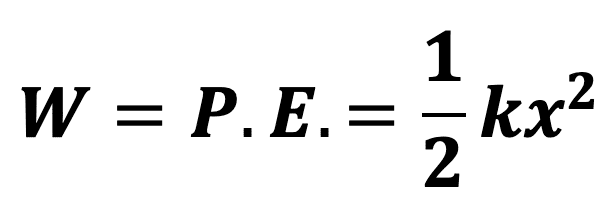
Work done to stretch the spring to the distance x equals the potential energy stored in it.

Where ‘k’ is the spring’s constant expressed in N/m. It describes the spring’s stiffness.
7. Law of Conservation of Energy
According to the law of conservation of energy, the energy stored in an isolated system is always conserved. The net energy of a system is equal to the sum of kinetic energy and potential energy.

8. Force of Friction
The force that resists the motion of an object against a surface is known as the force of friction. It is directly proportional to the normal force ‘N’ (contact force).

Here,

is the frictional coefficient.
Fluids
This category involves fluid dynamics concerning pulmonary and circulatory systems.
1. Density
Density is defined as a substance’s mass per unit volume. It measures how tightly the particles are packed together in a medium. The density of a material is presented by the underlying equation.

Where ‘m’ is the object’s mass and ‘V’ is its volume.
2. Continuity Equation
The continuity equation, i.e., Constant = A.v, describes the conservation of mass in a system. As the system’s mass is conserved, there exists a continuity of flow in that system. In this equation, ‘A’ is the cross-sectional area of flow, and ‘v’ is its velocity. The cross-sectional area of a system is inversely proportional to its velocity, and this relationship between the two plays a significant role in maintaining a system’s fluidity.4
3. Pascal’s Law
Pascal’s law of hydrostatic pressure states that pressure applied to a closed system is uniformly transmitted in all directions of the fluid regardless of the container’s shape. Hydrostatic pressure is the pressure in a fluid at a given depth, increasing with the fluid’s depth. According to Pascal’s law:
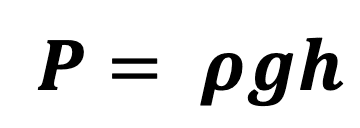
Where ‘P’ is the hydrostatic pressure, ‘p‘ is the density, ‘g‘ is the gravitational acceleration (9.8ms-2), and ‘h’ is the fluid’s depth.
4. Bernoulli’s Equation
Daniel Bernoulli stated that when a fluid flows horizontally, points with higher fluid speed experience less pressure, and points with lower fluid speed experience more pressure. This equation is known as Bernoulli’s principle. Bernoulli’s equation, derived from this principle, explains the relationship between kinetic energy, gravitational potential energy, and fluid pressure. It is presented as follows.

Bernoulli’s equation depicts how we can apply the law of energy conservation to a flowing fluid.
Electricity and Magnetism
1. Coulomb’s Law
Coulomb’s law states that the force of attraction or repulsion between two charged particles is directly proportional to the product of their charges and inversely proportional to the square of the distance between them. The underlying equation represents Coulomb’s law.

In this equation, ‘F’ is the electrostatic force of attraction or repulsion, q1 and q2 are the two charges, and ‘r’ is the distance between them. The proportionality constant ‘k’ is called Coulomb’s constant, and its value is 8.99 x109 N.m2.C-2.
2. Electric Potential
Electric potential is defined as the amount of work required to move a unit charge from one point to another in an electric field. Mathematically, electric potential ‘V’ for a charge ‘q’ that has to move distance ‘r’ is given as:
V = k q/r
Where k is the proportionality constant known as Coulomb’s constant.
3. Electric Current
Electric current ‘I’ is defined as the rate of flow of electrical charge. i.e.

Where ‘q’ is the electric charge, and ‘T’ is the time in which it flows.
4. Ohm’s Law
Ohm’s law describes the relationship between voltage ‘V’ and current ‘I’ flowing between the two points of a conductor. The equation is:
V = IR
Here, R is the proportionality constant called ‘resistance.’ The S.I. unit for resistance is ‘ohm’ and is represented by Ω.
5. Resistance
The material’s property due to which it resists or opposes the flow of current through it is called resistance. Resistance can be calculated by using this formula:

Where is the material’s resistivity, ‘L’ is its length, and ‘A’ is its cross-sectional area.
Resistors are the components of electrical circuits that oppose the current flow to a certain degree.5 The resistors can be connected in series as well as in parallel. Resistance in parallel resistors is calculated as follows:
1/Req. = 1/R1 + 1/R2 + 1/R3…
On the contrary, resistance for resistors connected in series in a circuit is given by:
Req. = R1 + R2 + R3…
6. Capacitance
A capacitor is a “two-terminal electric device” that can store charge. The ability of a capacitor to store charge is called “capacitance.” The capacitance ‘C’ of a capacitor with an electrical charge ‘Q’ and electric potential ‘V’ is given by the equation:
C = Q / V
Capacitors can be connected in series as well in parallel. The capacitance of capacitors connected in series is calculated as follows:
1/C = 1/C1 + 1/C2…
Similarly, the following mathematical expression calculates capacitance for capacitors connected in parallel.6
C = C1 + C2….
Waves, Sound, and Light
1. Photon Energy
“The amount of energy a single photon carries is known as photon energy.” It is represented as:
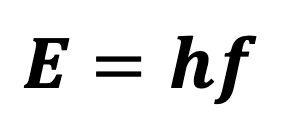
Where ‘h’ is the Planck’s constant whose value in System International (S.I.) is

it relates the amount of energy ‘E’ carried by a photon to its frequency ‘f’ and has great significance in quantum physics.
2. Snell’s Law
When a ray of light enters from one medium into another medium, it deviates from its original path. This phenomenon is called refraction. Snell’s law, or the law of refraction, describes the relationship between the refractive indices of the two mediums (n1, n2), angle of incidence (sinθ1), and angle of refraction (sinθ2).
n1 sinθ1 = n2 sinθ2
3. Lens Equation
The lens equation describes how the light rays bend through a lens to form an image. It is presented as:
1/f = 1/i + 1/o
Where ‘o’ is the object’s distance from the lens, ‘i’ is the distance of the image from the lens, and ‘f’ is the lens’s focal length. While using the lens equation, always remember that focal length is negative for a concave lens and positive for a convex lens.
4. Intensity of Sound in decibels
The rate at which a sound wave transfers energy per unit area is defined as its intensity. Although the S.I. unit of acoustic intensity is Watts per square meter, we usually express it in decibels (dB). One bel (B) is equal to ten decibels (dB).

Here, ‘I’ is the sound intensity and ‘Io’ is the reference sound intensity.
5. Velocity of Sound
The velocity of sound in a given medium can be calculated by using the wave equation, i.e.

In this equation, ‘v’ is the speed of the sound wave, ‘f’ is its frequency, and’ is the wavelength.
Atomic Theory
This category in the physics section focuses on atomic structure and configuration, sub-atomic particles, nuclear radiation, atomic behavior, electronic structure, and chemical bonding. AAMC does not specify any particular equations for this category. However, you just need to grasp your concepts regarding atomic structure, nuclear reactions, nuclear decay, atomic radiation, and an atom’s physical and chemical properties.
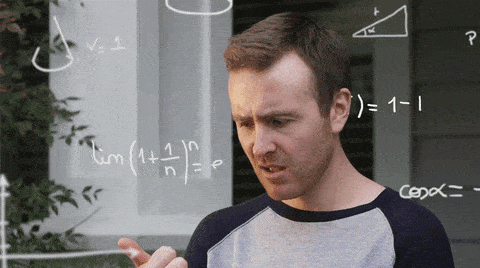
Applying equations
Are you wondering how to apply these equations while solving problems? Are you anxious about the number of physics equations you need to memorize for the MCAT? Do not worry! Just keep the following things in mind while applying the equations to succeed.
1. Be careful with the units!
Always be cautious with the units. `Sometimes you might spend minutes solving lengthy questions only to discover that your answer is not among the answer choices. It might happen because you used the wrong units during the calculations. To save time, always write the units carefully.
2. Practice, practice, practice!
To ace the physics section of the MCAT, practice as much as possible. Solve practice problems and tests to assess your physics knowledge. Completing maximum practice questions will help you understand how to apply essential physics equations to the problem questions.
3. Apply your physics concepts.
The primary purpose of the MCAT physics portion is to analyze your ability to apply your physics concepts to understand biological systems and responses. So, apart from cramming the equations and formulas, ensure that your concepts are clear. Apply those concepts to solve the problems.
FAQ MCAT Physics Questions:
Why is it important to understand MCAT Physics equations?
The “Chemical and Physical Foundations of Biological Systems” section of MCAT focuses on analyzing students’ ability to apply physical concepts to understand living systems. Always remember that you need to understand the physics equations apart from cramming them if you want to do well on the MCAT. Understanding the equations is important, as it will help you apply your concepts while solving the problems. Even if you have memorized the equations but still need background knowledge, you will not be able to apply them to the formulas. So, try understanding these equations and formulas along with the cram jams.
How can I improve my understanding of MCAT physics equations?
How can you memorize a sea of equations and formulas to help you get through the test? For this purpose, you need to consider underlying points.
Know the essential background behind the formula.
Use mnemonics to cram these equations. For instance, Gibb’s free energy formula, i.e.,i.e.

can be memorized as “Grandma Hates To Swim,” and q = mc∆t can be memorized as “MCAT.”
Write the equations again and again to memorize them.
Solve as many practice questions as possible. It will help you apply memorized equations to the problem questions.
The best thing you can do is to practice as much as possible. Practice does indeed make perfect in this situation.
To ensure you’re fully prepared we recommend getting the best MCAT prep course that matches your learning style, budget and overall needs. You’ll also want to prepare using MCAT practice tests, flashcards and more. Make sure you have a study plan in place before you start so you don’t get lost along the way.
Good luck on the MCAT!
References
1. Chemical and Physical Foundations of Biological Systems Section: Overview. Students & Residents. Accessed November 8, 2022. https://students-residents.aamc.org/whats-mcat-exam/chemical-and-physical-foundations-biological-systems-section-overview
2. Chemical and Physical Foundations of Biological Systems What Will the Chemical and Physical Foundations of Biological Systems Section Test? Accessed November 8, 2022. https://students-residents.aamc.org/media/8981/download
3. What is Kinetic Energy? – Definition, Formula, Examples, Unit, Types. BYJUS. https://byjus.com/physics/kinetic-energy/
4. Princeton. Continuity Equation. Princeton.edu. Published 2019. https://www.princeton.edu/~asmits/Bicycle_web/continuity.html
5. Flinn C. Resistance and Resistors. pressbooksbccampusca. Published online 2019. https://pressbooks.bccampus.ca/basicelectricity/chapter/resistance/#:~:text=Resistance%20is%20designated%20with%20R
6. Ling SJ, Sanny J, Moebs W, Janzen D. 4.2 Capacitors in Series and in Parallel. openpressusaskca. Published online November 28, 2018. https://openpress.usask.ca/physics155/chapter/4-2-capacitors-in-series-and-in-parallel/
7. University of British Columbia. Snell’s Law — The Law of Refraction. personal.math.ubc.ca. https://personal.math.ubc.ca/~cass/courses/m309-01a/chu/Fundamentals/snell.htm


